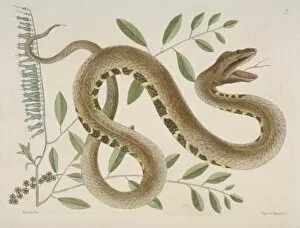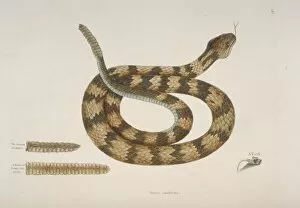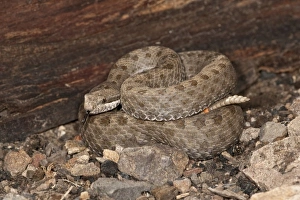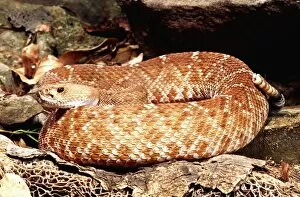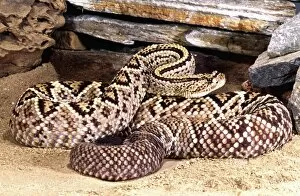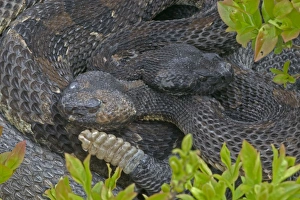Crotalus Collection (page 3)
Crotalus, the genus of venomous pitvipers, is widely distributed throughout the eastern United States
All Professionally Made to Order for Quick Shipping
Crotalus, the genus of venomous pitvipers, is widely distributed throughout the eastern United States. These snakes are known for their distinctive rattles and dangerous venom. In fact they can legally protected in eight out of the 32 states where they occur. One species within this genus is the Timber Rattlesnake (Crotalus horridus). Female Timber Rattlesnakes can often be found basking to bring their young to term. It's a fascinating sight to witness these gravid females preparing for motherhood in Pennsylvania, USA. Another member of the Cottonmouth Snake (Agkistrodon piscivorus). This snake also belongs to the pitviper family and can be found in various regions across America. In California, an interesting interaction occurs between a California Kingsnake (Lampropeltis getulus) and a Western Diamondback Rattler (Crotalus atrox). The kingsnake preys on its venomous counterpart, showcasing nature's intricate food chain dynamics. The Santa Catalina Island Rattlesnake (Crotalus catalinensis), unique among rattlesnakes as it lacks a rattle, slithers gracefully through rocky terrain in Loreto Bay National Park, Mexico. Its presence adds to the biodiversity of this stunning location along the Sea of Cortez. Texas boasts two notable species from this genus: the Western Diamond-backed Rattlesnake (Crotalus atrox) and Prairie Rattlesnake (Crotalus viridis). Both snakes exhibit distinct behaviors such as sunbathing or coiling up on desert floors during different seasons. Lastly, we have gravid female Timber Rattlesnakes once again basking under Pennsylvania's sun. Their dedication towards bringing new life into existence showcases both their resilience and importance within our ecosystem. These captivating images provide glimpses into the world snakes.








